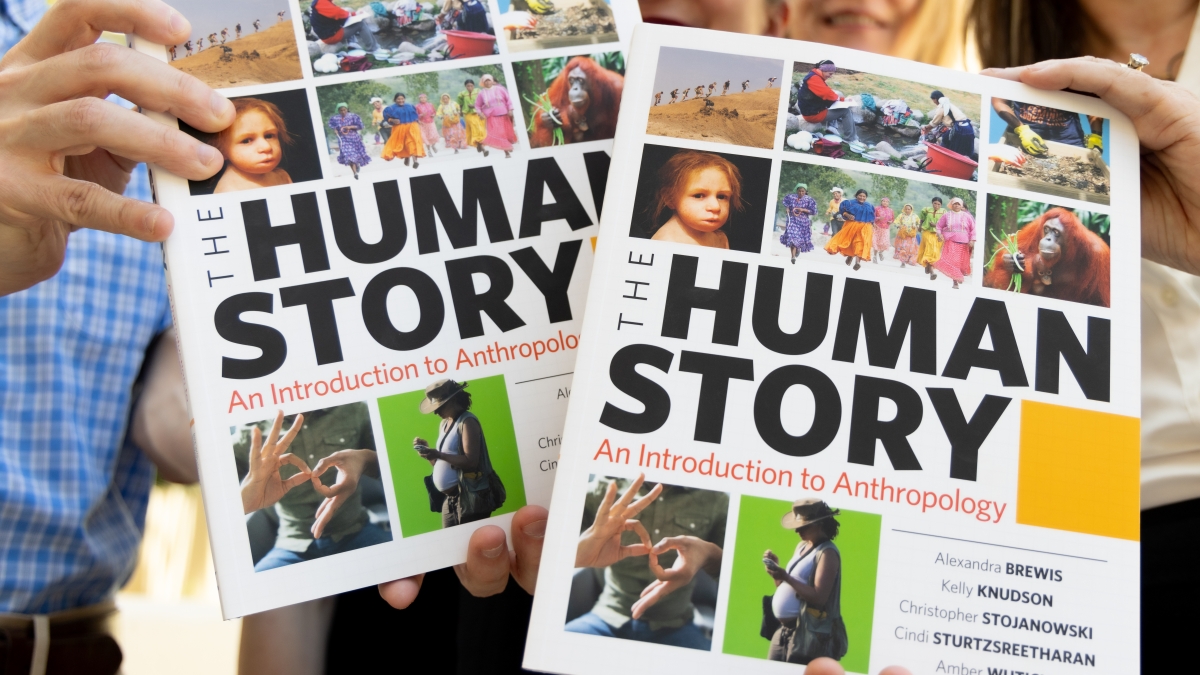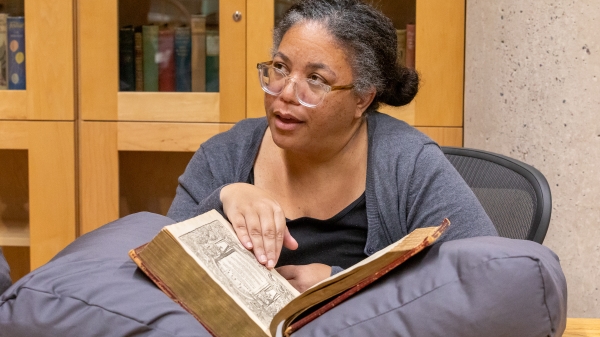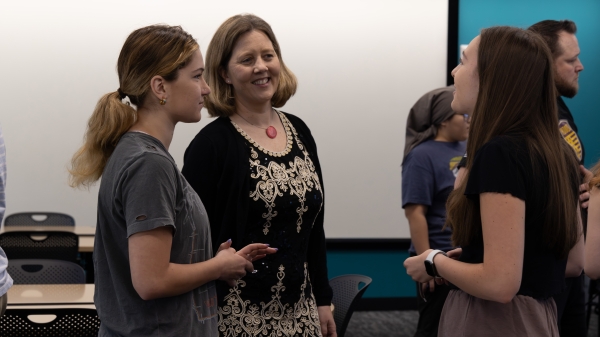New book aims to change how anthropology is introduced to students around the world
5 ASU anthropologists involved in writing 'The Human Story: An Introduction to Anthropology'

"The Human Story: An Introduction to Anthropology," published by W. W. Norton & Company; 1st edition. Photo by Meghan Finnerty/The College of Liberal Arts and Sciences
With a combination of over a century of experience, five Arizona State University anthropologists wrote a new textbook that they hope will change the way introductory anthropology is taught around the world.
“The Human Story: An Introduction to Anthropology” took six years, hundreds of expert reviews and many revisions to complete.
The authors include Regents and President's Professor Alexandra Brewis, who is lead author for the book, as well as professors Kelly Knudson, Christopher Stojanowski and Cindi SturtzSreetharan, along with President’s Professor Amber Wutich.
The textbook explains anthropology by using a four-field perspective — biological anthropology, cultural anthropology, linguistic anthropology and archaeology. In each chapter, the authors emphasize how these fields are intersectional.
“In this way, we explicitly make clear why thinking from various angles on a single problem is important, part of a set of best practices and is more informative in the long run,” SturtzSreetharan said. “Our approach serves the students and audiences best; especially because it is an introductory text, we make vast complex connections for the reading audience.”
The book features newer scholars in all fields from diverse backgrounds. The authors explained that, while the founders of the disciplines of anthropology are important, their goal is to show how anthropology is changing and developing for new generations.
The authors worked collectively on titles, sections and wrote each chapter together. This approach took more time, but they argue it emphasizes the importance of co-production and how the four fields intersect.
“We move quickly into looking at big questions and major challenges, and how anthropologists understand and are acting to solve them,” Brewis said. “Things like: ‘Why do humans make war, and can we not?’ ‘Do we actually need gender?’ ‘What do resilient economies look like?’ But we also move this thinking down to students’ everyday life with questions like: ‘Have you ever questioned what happens to future human remains,’ or ‘How do you interact with your doctor?’”
The book was written in a narrative style and uses storytelling and numerous case studies to have students critically engage with contemporary real-world problems. It boasts vibrant images and graphs, interactive online learning tools and even 3D models.
The 3D models allow students, online and in person, to examine and interact with virtual primate bone and fossil specimens. The models include monkey, ape, hominin and human examples.
Chapters in the textbook include “Primates: Our Closest Relatives,” “Human Origins and the Earliest Hominins,” “Gender” and “Death, Dying, and the Dead.”
“One of the chapters I really loved writing with my co-authors was our chapter on death and dying, which is a class I’ve loved teaching for years at ASU,” Knudson said. “It brings together so many perspectives from the past and present to help us understand what can be a scary topic, but one that impacts all of us.”
My personal goal was a book that students would pick up because it was assigned but keep reading because it is so darn interesting. I’m most excited about how this textbook makes a really complex mess of a field feel relevant and approachable for students. I want anyone who reads the text to say, ‘Hey, anthropology is for and about me!’
Alexandra BrewisASU Regents and President's Professor
While a textbook is meant for teaching students and those new to the subject, Wutich found the research and writing process beneficial to developing her own understanding of the complexities within the discipline.
“My own research is about how humans confront disasters and climate change, especially around water,” Wutich said. “For me, researching and writing this book has deepened my own understanding so much. Learning about the archaeology of drought, biology of thirst, language of crisis — this has enriched my own understanding of disasters from cultural anthropology.”
“The Human Story: An Introduction to Anthropology” is available now and will be used in courses starting in fall 2024.
“We have all remained committed throughout our careers to teaching in public institutions that serve very large and diverse student bodies,” the authors wrote in the introduction of the book. “We regularly teach required introductory courses to more than 500 students at a time, and those students come from a variety of backgrounds, countries and experiences.
“To present anthropology as a field that values this diversity, we made a strategic decision to prioritize the work being done by a younger — and increasingly diverse — generation of scholars. Our hope is that this approach emphasizes to all our students that anthropology is a field that welcomes and values them and has valuable applications in their lives, even if they don’t go on to become anthropology majors.”
More Arts, humanities and education

Annual symposium to explore fundamentals of trauma-informed education
When it comes to fostering positive and safe classroom communities, teachers are on the front lines every day. And, as society changes, educators increasingly need access to the right tools,…

An ASU-led rare book find
Aaron Pratt began to look through the 1587 copy of "Holinshed’s Chronicles." It was mid-morning, March 1, and Pratt, the Pforzheimer Curator at the University of Texas at Austin's Harry Ransom…

ASU professor named 2024 Teacher of the Year by Southwest Conference on Language Teaching
This year, the Southwest Conference on Language Teaching (SWCOLT) has recognized Arizona State University’s Sara Lee as the 2024 Teacher of the Year. As part of the selection process, Lee gave a…
